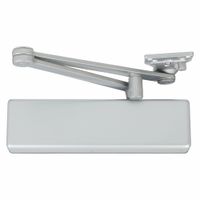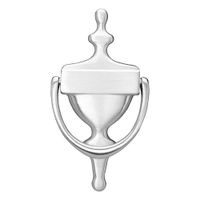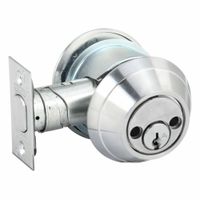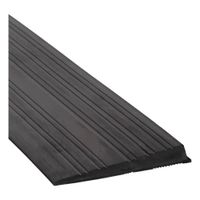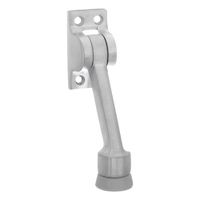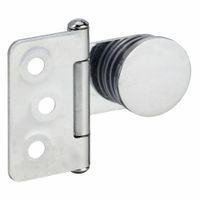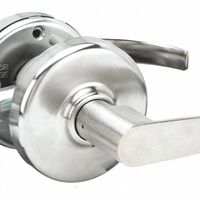Call +(254) 703 030 000 / 751 483 999 / 721 704 777
.....Read More
Frequently Asked Questions
What are the different types of door hardware?
Please tell me what you would like me to answer.
How do I choose the right door lockset for my home?
Choosing the right door lockset for your home involves considering several factors to ensure security, functionality, and aesthetic appeal.
First, assess the level of security you need. For exterior doors, opt for deadbolt locks with a Grade 1 or Grade 2 ANSI/BHMA rating, as these offer superior resistance to forced entry. Look for features like anti-pick pins, drill-resistant plates, and a solid metal bolt. For interior doors, less robust locks like privacy or passage sets might suffice, depending on the room's purpose.
Next, consider the lockset's function. Do you need a keyed entry for exterior doors, a privacy function for bedrooms or bathrooms, or a passage function for closets that don't require locking? There are also dummy knobs for purely decorative purposes.
Material and finish are also important for both durability and aesthetics. Common materials include brass, bronze, stainless steel, and zinc. Finishes range from polished chrome and satin nickel to oil-rubbed bronze and matte black, allowing you to match your home's décor.
Finally, think about convenience and smart features. Smart locks offer keyless entry via keypads, smartphones, or voice commands, and some can integrate with home automation systems for remote access and monitoring. While often more expensive, they provide enhanced convenience and control. Always ensure the lockset is compatible with your door's thickness and existing bore holes for easy installation.
What is the purpose of a door closer?
Please tell me what you would like me to answer.
How do I install a door threshold?
Installing a door threshold helps seal the bottom of a door, improving insulation and preventing drafts. First, measure the width of your door frame to determine the appropriate length for your threshold. Cut the threshold to size using a saw, ensuring a snug fit.
Next, prepare the subfloor or existing flooring. Clean the area thoroughly, removing any debris or old caulk. If needed, you might need to level the surface. Apply a bead of construction adhesive to the underside of the threshold.
Carefully position the threshold in the door frame, aligning it correctly. Press it firmly into place to ensure good contact with the adhesive. For added security, pre-drill pilot holes through the threshold and into the subfloor, then secure it with screws. Ensure the screw heads are flush with or slightly recessed into the threshold.
Finally, apply a thin bead of caulk along the edges where the threshold meets the door frame and the floor. This seals any gaps and provides a finished look. Allow the adhesive and caulk to cure according to the manufacturer's instructions before heavy use.
What are the benefits of using weatherstripping on doors?
Please specify what you would like me to answer regarding.
How do I maintain and lubricate door hinges?
To maintain and lubricate door hinges, start by cleaning them thoroughly. Use a cloth to wipe away any dust, dirt, or grime from the hinge pins, knuckles, and leaves. For stubborn buildup, you can use a mild soap and water solution or a specialized hinge cleaner. Ensure the hinges are dry before proceeding.
Next, identify the type of lubricant needed. For most standard residential door hinges, a silicone-based spray lubricant, lithium grease, or even petroleum jelly can work effectively. Avoid using WD-40, as it can attract dust and grime over time, leading to more frequent maintenance.
Apply the lubricant directly to the hinge pins and into the crevices of the knuckles. If possible, gently open and close the door several times to help distribute the lubricant evenly. You can also temporarily remove the hinge pins (if they are removable) to clean and lubricate them individually before reinserting.
Regular maintenance, typically once or twice a year, can prevent squeaking, sticking, and premature wear. If hinges are heavily rusted or damaged, consider replacing them to ensure proper door function and longevity.
What is the difference between a door viewer and a door knocker?
A door viewer, also known as a peephole, is a small lens or optical device installed in a door that allows someone inside to see who is outside without opening the door. It provides a wide-angle view, enhancing security by letting occupants screen visitors before granting entry.
A door knocker, on the other hand, is a device attached to the exterior of a door, typically made of metal, used by visitors to announce their presence by striking it against the door. It is a traditional and decorative way to signal arrival, without offering any visual security function.
How do I adjust a sliding door to ensure it operates smoothly?
Adjusting a sliding door for smooth operation typically involves a few key steps, primarily focusing on the rollers and the track.
First, thoroughly clean the track. Debris, dirt, or accumulated grime can significantly hinder the door's movement. Use a vacuum cleaner to remove loose particles, then wipe the track down with a damp cloth and a mild detergent. Ensure the track is dry before proceeding.
Next, inspect the rollers. Most sliding doors have adjustable rollers located at the bottom of the door. Over time, these rollers can become worn, dirty, or misaligned. To access them, you might need to lift the door off its track or remove a cover plate. Use a screwdriver to adjust the roller screws. Turning the screws clockwise will usually raise the door, while turning them counter-clockwise will lower it. Adjust each roller gradually, testing the door's movement after each adjustment, to achieve an even and smooth glide. Ensure both sides of the door are at a similar height to prevent binding.
If the rollers are severely worn or damaged, they may need to be replaced. You can usually find replacement rollers at hardware stores.
Finally, lubricate the track and rollers. Use a silicone-based lubricant, as oil-based lubricants can attract more dirt and grime. Apply a thin layer of lubricant to the top of the track and directly onto the rollers. This will reduce friction and help the door move more effortlessly.
By following these steps, you can significantly improve the operation of your sliding door, making it glide smoothly and quietly.
What are the best materials for door sweeps?
The best materials for door sweeps depend on the specific needs for insulation, durability, and aesthetics. Common choices include: * Rubber/Silicone: Excellent for sealing gaps, providing good insulation against drafts, dust, and moisture. They are flexible, durable, and can withstand various weather conditions.
* Brush: Often made from nylon or polypropylene bristles, brush sweeps are good for uneven surfaces and provide a decent seal against dust and insects, but are less effective for thermal insulation than rubber.
* Vinyl: A cost-effective option that offers good flexibility and resistance to moisture. It's a common choice for basic draft stopping.
* Aluminum/Metal: These materials are typically used for the housing or retainer of the sweep, providing structural integrity. They are durable and can be combined with rubber, brush, or vinyl inserts.
* Felt: While less durable than other options, felt provides a soft seal and is suitable for interior doors where minimal friction is desired.For maximum effectiveness, consider the climate, the type of door (interior/exterior), and the size of the gap you need to seal.
How do I replace a broken door handle or knob?
Replacing a broken door handle or knob typically involves a few key steps. First, you'll need to remove the old hardware. This usually means unscrewing the screws on the escutcheon plates (the decorative plates covering the mechanism on both sides of the door) and carefully pulling the handle components apart. For older knobs, there might be a small pin or set screw on the neck of the knob that needs to be depressed or unscrewed before the knob can be removed.
Once the old hardware is off, you'll want to check the latch mechanism (the part that extends into the door frame) and the strike plate (the metal plate on the door frame that the latch goes into). If these are also damaged, you'll need to replace them. Otherwise, you can proceed with installing the new handle.
To install the new handle, simply reverse the removal process. Insert the new latch mechanism if applicable, then slide the new handle components onto the spindle (the square rod that connects the two handles). Secure the escutcheon plates with screws, ensuring the handle operates smoothly. Before tightening all screws completely, test the handle to make sure the latch retracts and extends properly and that the handle turns freely without binding. Finally, ensure the strike plate aligns correctly with the latch for a secure closure.
